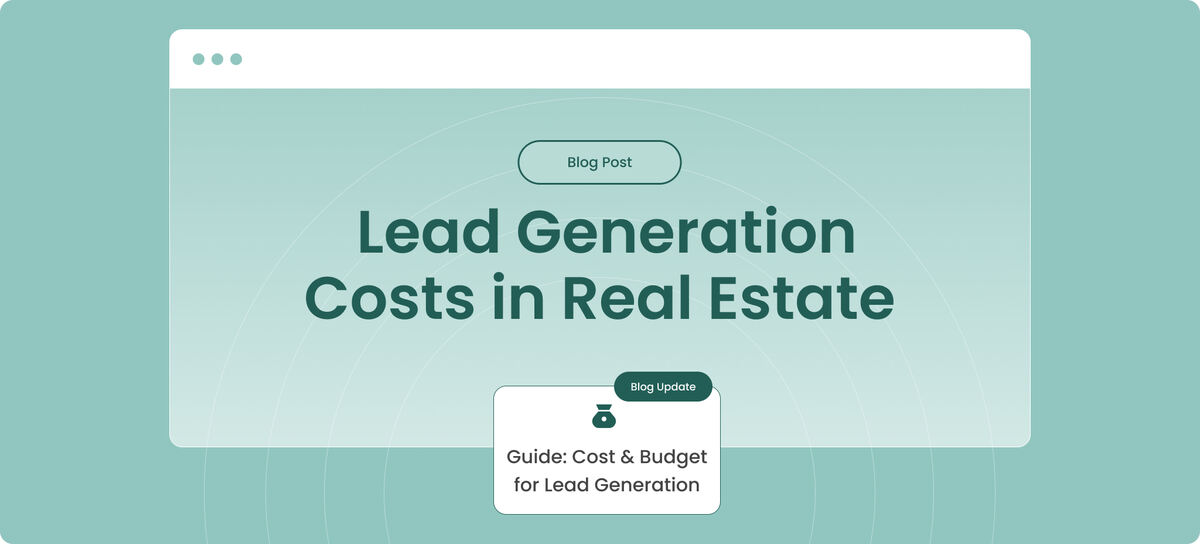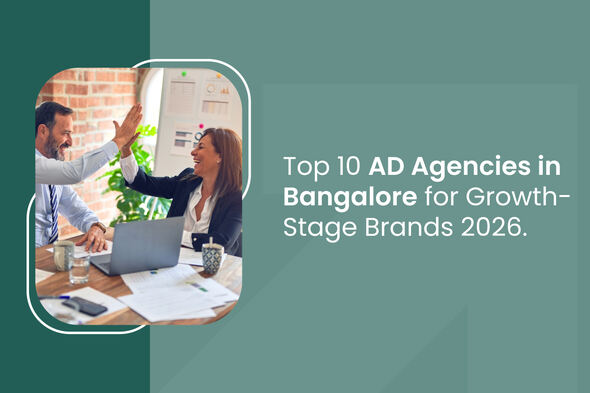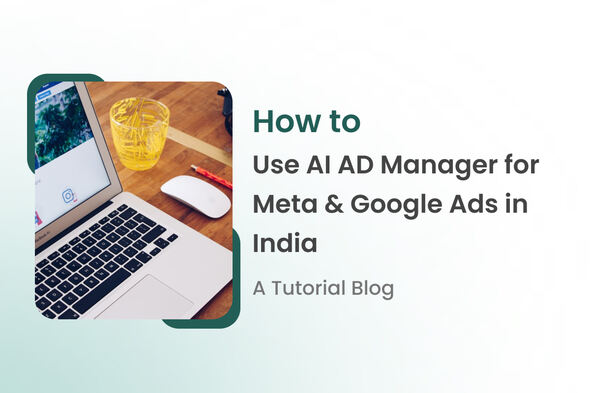Navigating the complexities of real estate lead generation requires a clear understanding of the associated costs. This blog breaks down the various expenses involved, from digital marketing and advertising to CRM tools and content creation. Learn how to optimize your budget, enhance your ROI, and make informed decisions to effectively generate and manage leads, all while ensuring cost-efficiency and maximizing your marketing investments.
- Real estate lead generation costs are shaped by competition, lead quality, marketing channels, and the tools used to manage and convert leads.
- Major cost components include website development, SEO, paid advertising, social media marketing, content creation, CRM systems, and property portal listings.
- Long-term methods like SEO and content marketing require upfront investment but offer sustainable, lower-cost lead flow over time, while PPC and social ads deliver instant results with ongoing spend.
- Monitoring performance, optimizing campaigns, and focusing on high-quality leads help reduce overall cost per lead and improve marketing ROI.
- GrowEasy enables cost-efficient lead generation through customized strategies, advanced analytics, expert guidance, and flexible pricing designed to maximize ROI.
Introduction
Understanding lead generation costs in real estate is crucial for maximizing your marketing ROI in 2025. In this comprehensive guide, we break down the costs of generating high-quality real estate leads, reveal the average cost per lead for agents and brokers, and show you how to allocate your budget for the best results. Discover which strategies drive the lowest cost per lead, what factors influence your expenses, and how to optimize your real estate lead generation for growth and profitability this year.
Why Lead Generation Costs Matter
Understanding the costs associated with lead generation is crucial for several reasons:
- Budget Allocation: This helps in efficiently allocating your marketing budget.
- ROI Calculation: Allows for accurate calculation of return on investment.
- Strategy optimization : Guides the refinement of strategies to improve cost-effectiveness.
- Sustainable Growth: Ensures long-term profitability by managing expenses effectively.
Key Factors Influencing Lead Generation Costs
- Market Competition: Higher competition in your local market can increase the cost of acquiring leads due to bidding wars on ad platforms and increased marketing efforts.
- Lead Quality: Higher-quality leads, which are more likely to convert into clients, typically cost more to generate than lower-quality leads.
- Marketing Channels: Different channels have varying cost structures. For example, digital ads might have pay-per-click costs, while social media might involve both advertising and content creation costs.
- Technology and Tools: Investing in advanced tools and technologies for lead generation and management, such as CRM systems, can add to the overall cost.
Breakdown of Lead Generation Costs in Real Estate
1. Website Development and Maintenance
A professional website is a cornerstone of modern lead generation. Costs include initial design and development, ongoing maintenance, and periodic updates. A high-quality website with integrated lead capture forms and SEO optimization is essential for attracting and converting leads.
2. Search Engine Optimization (SEO)

SEO involves optimizing your website to rank higher in search engine results for relevant keywords. Costs include hiring SEO specialists, content creation, and link-building efforts. While SEO can be a significant investment, it offers long-term benefits by driving organic traffic and leads to your website.
3. Paid Advertising (PPC)
Paid advertising on platforms like Google Ads and social media channels is a popular method for generating leads. Costs are typically based on a pay-per-click (PPC) model, meaning you pay each time someone clicks on your ad. The total cost depends on factors such as the competitiveness of keywords, targeting options, and ad quality.
4. Social Media Marketing
Social media marketing involves creating and promoting content on platforms like Facebook, Instagram, and LinkedIn. Costs include advertising spend, social media management services, and content creation expenses, such as hiring graphic designers or videographers for professional posts.
5. Content Marketing
Content marketing, including blog posts, videos, and infographics, helps attract and engage potential clients. Costs include hiring writers, designers, and video producers, as well as distribution costs for promoting content across various channels.
6. Email Marketing
Email marketing is a cost-effective way to nurture leads by sending personalized messages and newsletters. Costs involve email marketing software subscriptions and any fees for designing and writing professional email campaigns.
7. CRM Systems and Lead Management Tools
Customer Relationship Management (CRM) systems help manage and track leads, ensuring efficient follow-up and conversion. Costs include software subscriptions, customization, and training for your team to use the tools effectively.
8. Online Property Portal Listings
Listing properties on online portals such as Zillow, Realtor.com, and local equivalents can generate significant leads. Costs vary based on the platform and the type of listing (basic vs. premium).
9. Cold Calling and Messaging
Cold calling and messaging remain effective for generating leads, especially for reaching potential clients who are not actively searching for real estate services. Costs include call center services, phone bills, and salaries for in-house staff.
10. Local Partnerships and Events
Forming local partnerships and hosting events such as open houses, community seminars, or joint ventures with local businesses can generate leads. Costs include venue rental, marketing materials, and event management.
Additional Considerations
- Lead Quality vs. Quantity: It's crucial to focus on the quality of leads rather than just the quantity. Higher-quality leads, while potentially more expensive to acquire, are more likely to convert into clients.
- Long-Term vs. Short-Term Cost: Some lead generation methods, like SEO and content marketing, require a significant upfront investment but offer long-term benefits. Others, like PPC and social media ads, provide immediate results but require ongoing spending.
- Monitoring and Optimization: Regularly monitoring your lead generation efforts and adjusting your strategies can help optimize costs and improve ROI. Use analytics tools to track performance and make data-driven decisions.
How GrowEasy Can Help Manage Lead Generation Costs

Managing lead generation costs effectively is crucial for maximizing your return on investment and ensuring long-term success in the real estate market. Here’s how GrowEasy can assist:
- Customized Solutions: GrowEasy offers tailored lead generation strategies that match your budget and goals. We help you choose the most cost-effective methods to reach your target audience.
- Advanced Analytics: Our tools provide in-depth insights into your lead generation performance, allowing you to track costs and ROI accurately. This helps in refining your strategies to get the best results at the lowest cost.
- Expert Guidance: With GrowEasy, you benefit from the expertise of professionals who understand the real estate market. We provide guidance on optimizing your budget and selecting the right channels for lead generation.
- Comprehensive Services: From website development to SEO, paid advertising, and local partnerships, GrowEasy offers a full suite of services to cover all aspects of lead generation. We handle everything, ensuring that you get high-quality leads without overspending.
- Flexible Pricing: GrowEasy provides flexible pricing options that cater to your specific needs and financial constraints. We work with you to create a cost-effective plan that delivers results.
Conclusion
Understanding and managing lead generation costs is vital for any real estate professional or agency aiming for long-term success. By carefully selecting and optimizing your lead generation strategies, you can achieve a high return on investment and maintain a steady flow of quality leads. GrowEasy is here to help you navigate the complexities of lead generation and ensure you make the most of your budget.
Contact GrowEasy today to learn how we can help you manage your lead generation costs and achieve your real estate goals!
FAQs
1. How do you calculate the cost per lead in real estate?
Add up all the costs incurred in a specific marketing campaign. Count the total number of leads generated from that campaign. Divide the total cost by the total number of leads to get your CPL.
2. What is the cost of lead generation at GrowEasy?
Our cost per lead (CPL) pricing is usually fixed based on your requirements. For example, if you are looking for real estate lead generation, based on the property value, location, and amenities, the price varies from Rs. 100 per lead to Rs. 800.





